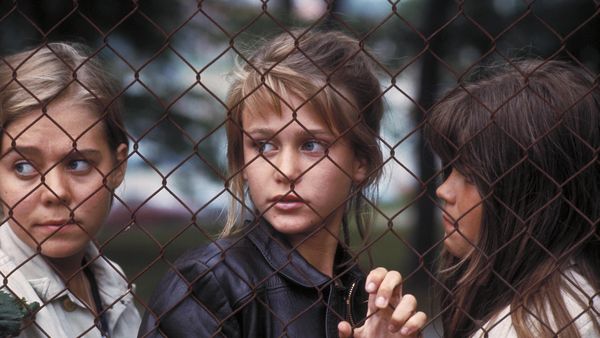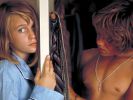Eye For Film >> Movies >> A Swedish Love Story (1970) Film Review

In 1970, Erich Segal's novel Love Story was the top-selling work of fiction in the US, while in the same year Arthur Hiller's film adaptation (with a screenplay by Segal) was the number one box office attraction. So when En Kärleks Historia (literally 'A Love Story') was also released in 1970, it was rebranded abroad as A Swedish Love Story, in part to avoid confusion with Segal's tearjerker romance – although no doubt also to generate a different kind of confusion altogether.
Forget the artful oeuvre of Ingmar Bergman – ever since the 1967 release of Vilgot Sjöman's I Am Curious (Yellow), Swedish cinema had been acquiring a growing international reputation for sexual explicitness, and the phrase 'Swedish love' encodes the promise – while also exploiting the expectation – of liberated European porn. Still, anyone seeking masturbatory thrills from Roy Andersson's feature debut is bound to be disappointed – even if disappointment will turn out to be a key theme of the film.

"What are you going to be?", asks refrigerator salesman John Hellberg of guitar-playing 15-year-old Pär (Rolf Sohlman). Pär does not have a clue, or even a care, about the future, for he is too wrapped up in the immediacy of his burgeoning romance with John's "almost 14" daughter Annika (Ann-Sofie Kylin). The film tracks this evolving relationship, from the first glances exchanged between the two to their hesitant pursuit of each other, from an early break-up (rooted in Pär's vulnerability) to a touching, tearful reconciliation, and from their first (implied) sexual encounter to a big summer party where their respective parents will finally meet.
It is as sweet and tender, not to mention as well-observed, a portrayal of young love as you are likely to find the other side of a John Hughes movie. Casting fresh-faced actors who actually look their age, Andersson lets his two lovebirds soar - and sometimes stumble - through their affair, while delighting in their tentative innocence. Yet if Pär and Annika inhabit a hermetic bubble defined by themselves and their peers, and pay little heed to the grown-up problems all around them, Andersson's wide lens accommodates within its distancing frame the worlds of both adolescents and adults. If, early in the film, we see 'tough' Pär dressed in a black leather jacket and riding his moped as though he were a Swedish Rebel Without A Cause, Andersson then pulls his camera out to show this 'wild one' being overtaken - with hilarious absurdity - by a slow-pedalling, ice-cream eating cyclist.
This telling shift in perspective typifies a film that places the teen characters at its centre, yet never fails to set their blinkered joy against the very adult misery to which they remain so oblivious. Pär and Annika first catch one another's eye while Pär is on a family visit to his widowed grandfather (Gunnar Hossiander), who complains tearfully of his own disillusionment and loneliness. Equally lonely and even more tearfully depressed is Annika's single aunt Eva (Anita Lindblom), who in a desperate attempt to stave off her unmarried status appears to have fallen into an abusive relationship.
Meanwhile Annika's father John seeks refuge in alcoholism and arrogance from the 45 years of life that he feels he has wasted on a loveless marriage and an unsatisfying career. Unhappiness, frustration, poverty and disappointment form the bleak backdrop to our young couple's breezy journey towards adulthood – and if Pär is too distracted, too self-involved and too happy, to have any idea what he is going to be, this film of contrasts leaves us with a clear enough vision of just how all the wide-eyed enthusiasms of youth turn out in time.
Although Andersson's wry eye and bittersweet heart would find their perfect vehicles decades later in his masterpieces of minimalist miserabilism Songs From The Second Floor (2000) and You, The Living (2007), A Swedish Love Story is an exceptional debut – an apparently conventional romance that showcases all the off-kilter humanism and humour of one of Sweden's greatest directors, while proving that there can be far more to 'Swedish love' than mere hanky panky with blonde hair and a pitch accent.
Reviewed on: 24 Mar 2011

















